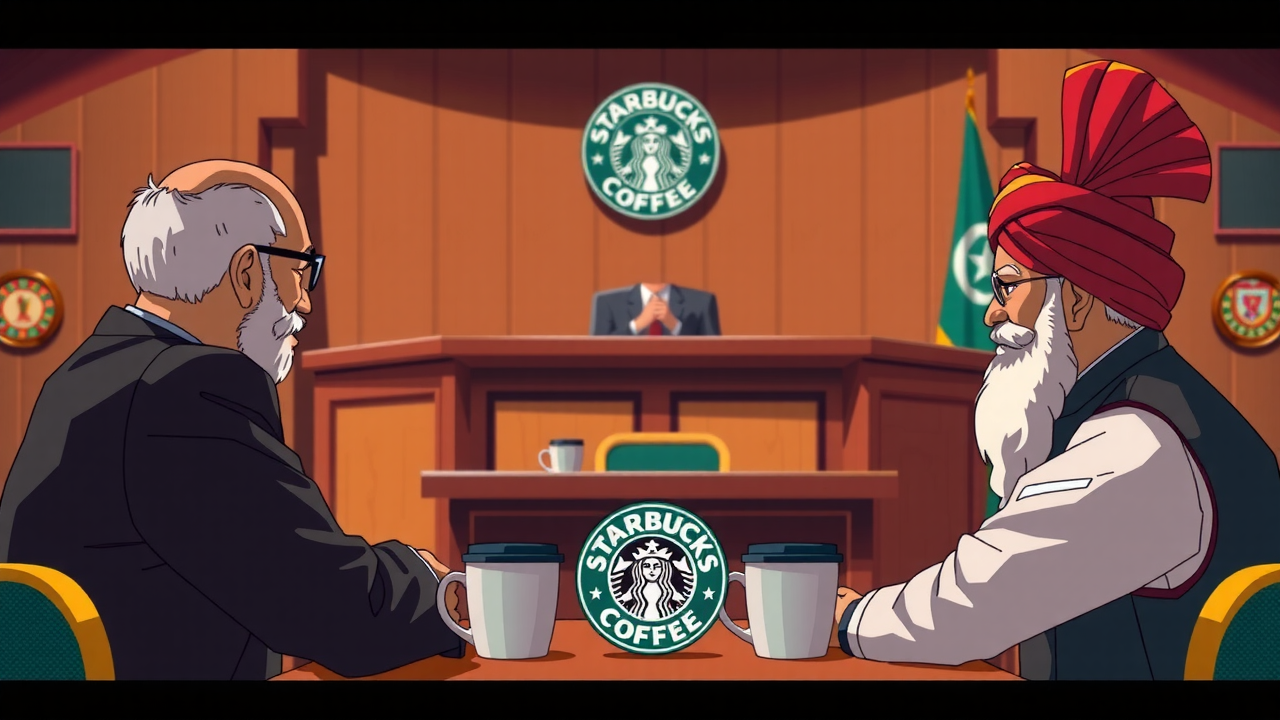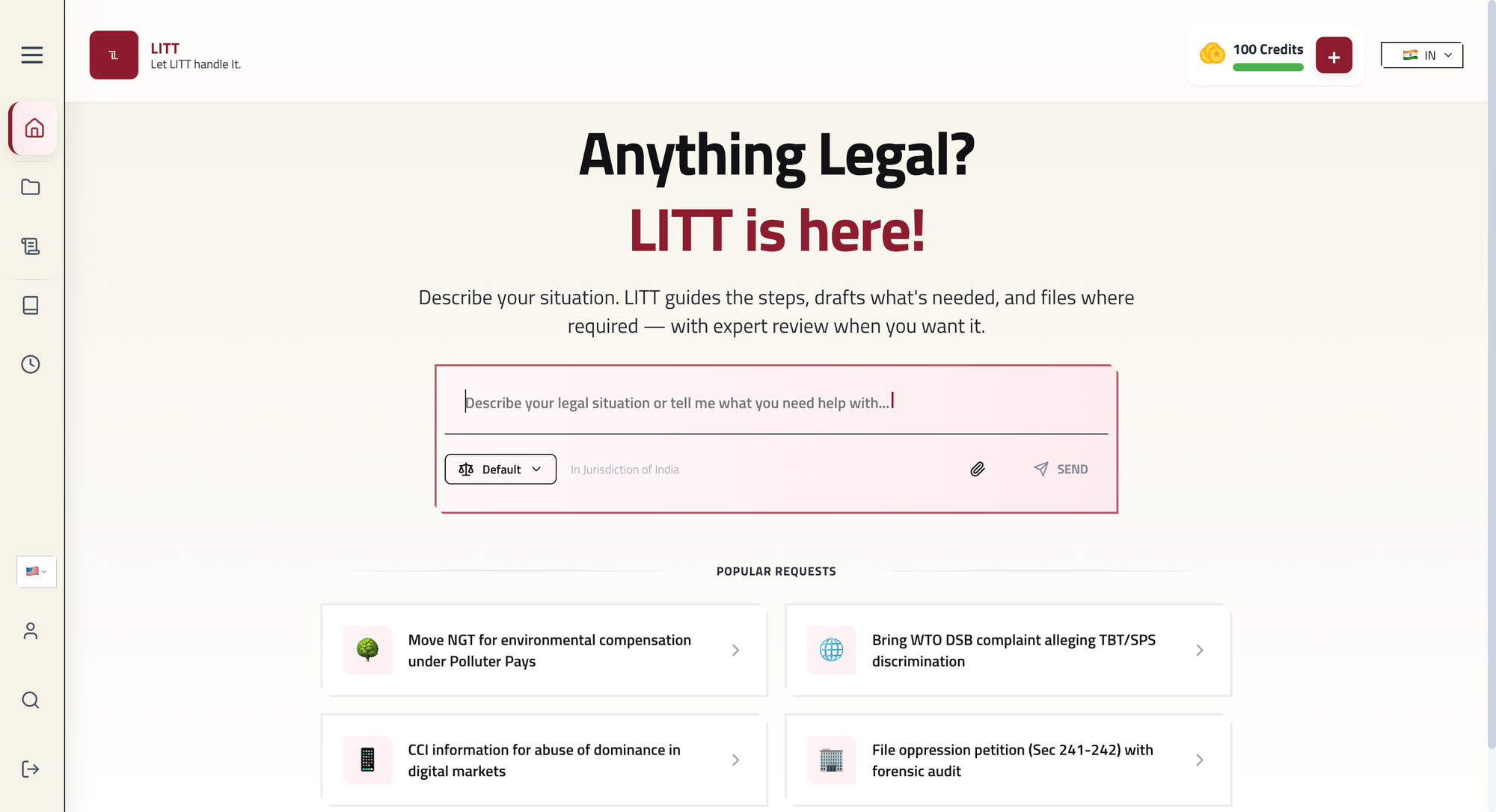In the case Starbucks Coffee v. Sardarbuksh Coffee & Co., the Delhi High Court ruled that Sardarbuksh’s brand name and logo were deceptively similar to Starbucks, causing potential confusion among consumers. The Court ordered Sardarbuksh to rebrand as “Sardarji-Bakhsh Coffee & Co.” due to the phonet

AI assistant for case prep and filings
“Deceptive similarity must be assessed from the perspective of an average consumer with ordinary intelligence, considering both phonetic and visual similarities. Even minor differences in trademarks can lead to confusion if they create a similar impression, especially when a well-known mark is involved.”
Citation: CS (COMM) 1007/2018
Date of Judgment: 1st August, 2018
Court: High Court of Delhi
Bench: Man Mohan (J)
Facts
- In 2001, Starbucks Corporation, a renowned international coffee chain, registered the word mark “STARBUCKS” and its corresponding logo in India as a trademark. The Starbucks logo, which depicts a crowned maiden with long hair, has since been protected under copyright laws. The company is widely recognized for its high-quality coffee and its distinct branding, which has become synonymous with its products and services worldwide.
- In 2015, a new coffee business named Sardarbuksh Coffee & Co. was established in Delhi. The logo of Sardarbuksh consisted of a turbaned commander’s face surrounded by a circular black band, with wavy lines on either side, closely resembling Starbucks’ logo in shape and structure. Additionally, the name “Sardarbuksh” bore a phonetic similarity to “Starbucks,” leading to a potential association between the two brands, especially since both businesses offered similar products and services, creating a likelihood of confusion among consumers.
- In 2017, Starbucks Corporation sent a letter of demand to Sardarbuksh, requesting that they change their logo due to its similarity to the Starbucks logo. In response, the defendants altered only the colour scheme of their logo to black and yellow but continued to use the same name and logo design, resuming operations in May 2018. Despite the changes, the resemblance in both the logos and the names of the two businesses remained significant, which prompted Starbucks to file a lawsuit in the Hon’ble High Court of Delhi, alleging trademark infringement by Sardarbuksh.
- The main issue presented was the deceptive similarity between Sardarbuksh’s logo and name, compared to Starbucks’ trademarked brand. The plaintiffs argued that Sardarbuksh’s logo and brand name were not only confusingly similar in design, shape, and form, but also in pronunciation, which could mislead consumers into associating Sardarbuksh with Starbucks. Both companies provided nearly identical goods and services, further exacerbating the potential for confusion.
Initial Order by Delhi High Court
The Delhi High Court, under Justice Manmohan, issued an interim order requiring Sardarbuksh to rebrand their business as “Sardarji-Bakhsh Coffee & Co.” for any new outlets. The court allowed the defendants’ five existing outlets to temporarily continue operating under the name “Sardarbuksh Coffee & Co.” until the court’s final judgment. This interim order followed Starbucks’ legal action, in which the defendants were instructed by the court to consider rebranding to address the issue of trademark infringement. In partial compliance, the defendants changed their business name for future outlets while maintaining the original branding at existing locations.
Final Order by Delhi High Court
On September 27, 2018, both parties convened before the Court to finalize the terms of settlement. As per the Court’s final order, it was directed that the defendants fully rebrand all their outlets as “Sardarji-Bakhsh Coffee & Co.” Additionally, the Court granted the defendants the right to initiate legal proceedings against any third party attempting to use the name “Bakhsh” in a similar business context. This settlement, approved by the Court, effectively resolved the legal dispute between the parties, and the case was closed based on these mutually agreed terms.
Key legal issues discussed
1. Whether the Defendant’s mark is deceptively similar to that of the Plaintiff’s?
Yes
The Court concluded that the defendant’s mark “Sardarbuksh Coffee & Co.” was deceptively similar to Starbucks’ trademark “Starbucks.” This decision was grounded in well-established legal principles from Indian trademark law, particularly under Section 29(2)(b) of the Trade Marks Act, 1999, which provides protection against the use of marks that are deceptively similar, causing confusion in the minds of consumers. The determination of deceptive similarity is defined under Section 2(1)(h) of the Trade Marks Act, 1999, which states that a mark is considered deceptively similar if it is likely to cause confusion or deceive consumers due to the resemblance between the two marks in appearance, sound, or meaning.
The Court referred to the case of National Sewing Thread Co. Ltd. vs. James Chadwick and Bros[1], which established that deceptive similarity should be judged by placing oneself in the position of an ordinary consumer of average intelligence. The test focuses on whether the consumer would likely be confused by the similarity between the two marks in question. In this case, the visual and phonetic similarities between “Sardarbuksh” and “Starbucks” would likely cause confusion, as both names have a similar sound, rhythm, and appearance when written or pronounced.
Additionally, the logos of both companies had striking similarities, including the use of a round shape and similar elements, despite minor variations in color and design. The Court further emphasized the importance of a trademark’s goodwill in such cases. “The goodwill associated with Starbucks’ brand, being a globally recognized entity, carried significant weight in determining the likelihood of consumer confusion.” Thus, the Court concluded that “the defendant’s mark was deceptively similar to Starbucks’ mark and could mislead consumers into associating the two businesses, a situation against which trademark law seeks to protect.”
2. Whether there was trademark infringement?
Yes
The Court found that the defendant’s use of “Sardarbuksh Coffee & Co.” constituted trademark infringement. The defendant’s use of “Sardarbuksh Coffee & Co.” constituted trademark infringement under Section 29(1) of the Trade Marks Act, 1999, which outlines the infringement of a registered trademark by any person who uses a mark identical or similar to the registered mark for similar goods or services, thereby causing confusion among the public.
By applying the same reasoning used to establish deceptive similarity, the Court determined that the defendant’s mark was likely to cause confusion among customers, potentially harming the plaintiff’s goodwill and reputation. The similarity in both the name and the logo led the Court to conclude that the defendant’s mark infringed upon Starbucks’ registered trademark. Consequently, the defendants were ordered to rebrand their business as “Sardarji-Bakhsh Coffee & Co.”
[1] AIR 1953 SC 357.


